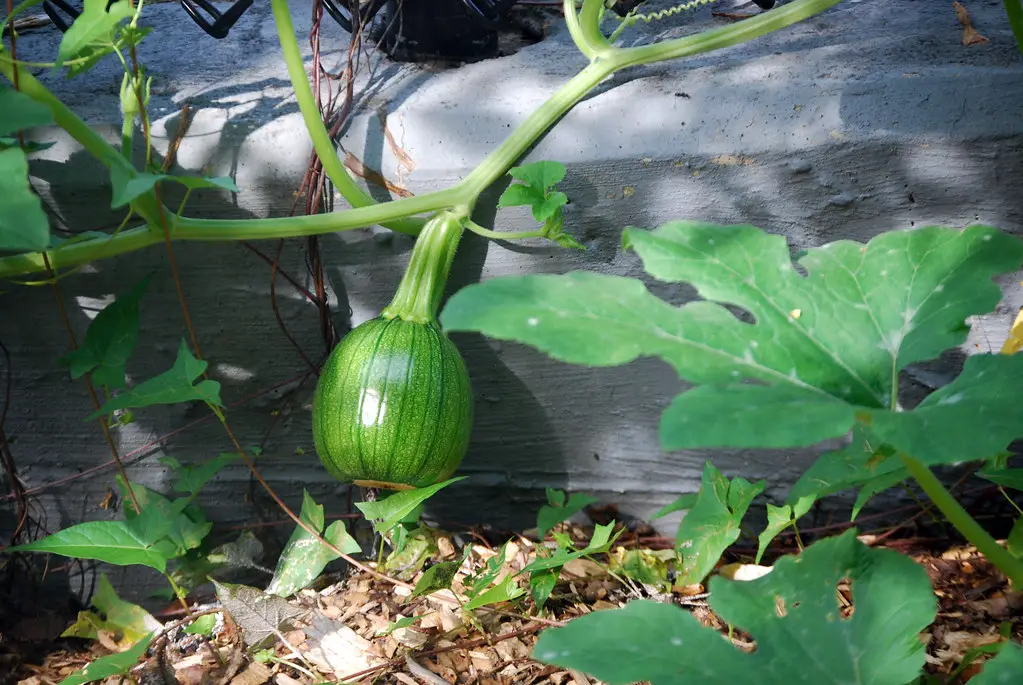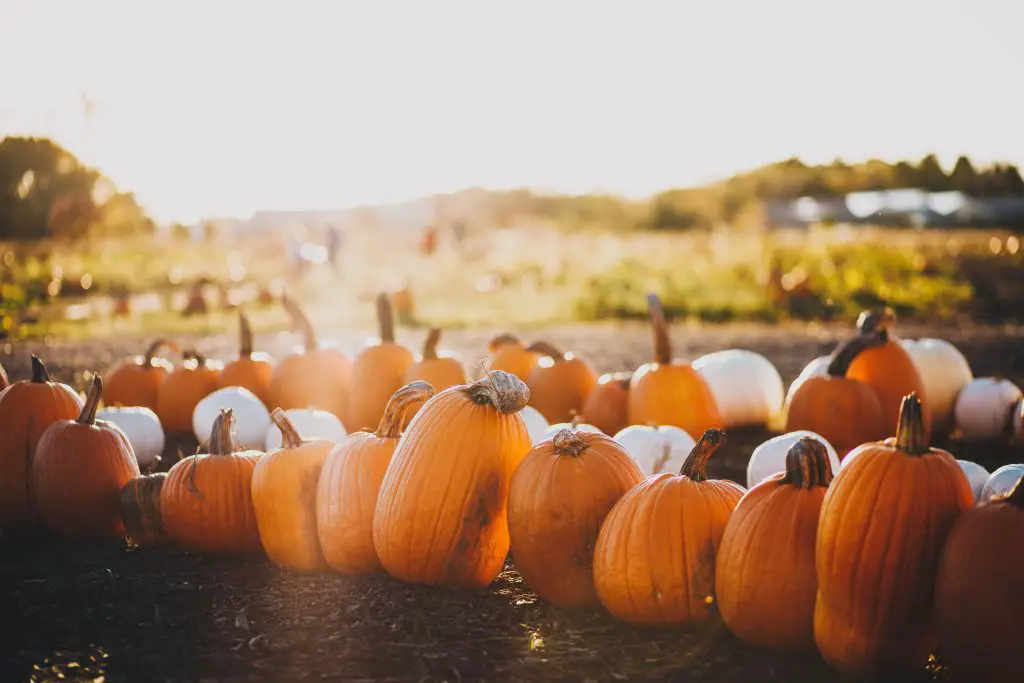Do Pumpkins Start Out Green? Pumpkins are incredibly easy plant to grow in the backyard you simply pop the seed into the ground and watch them grow. As long as they survive the slugs and snails in the first stage you will see this enormous vine develop and then produce fruit. However, if this is the first time you have grown pumpkins you may not know what color the fruit is. Is it normal for the pumpkins to start out green?
Pumpkin fruit will initially be a pale green colour that will then ripen to the final colour which will vary depending upon the specific variety that you’re growing. There are some varieties that will produce a bright orange skin while others will tend to be a grey-green color or even a dark cream colour that is distinctly different from the initial appearance from the fruit when it is first developing.
Typically what you can expect to see is that the fruit will start off quite small. If you’re observant you will notice it when it is about the size of a marble however typically I find that I don’t pay enough attention to my pumpkin plants and usually I see it when it’s about the size of a baseball at this stage it will usually be a very light green colour fruit. An example of what you might expect to see is shown in the picture below.

This appearance will typically remain until the pumpkin reaches it’s full size which again will depend significantly upon the variety that has grown. Once the plant has reached full size it will typically take a while before you begin to see characteristic color changes which is an indication that the fruit is beginning to ripen.
At this stage you will also find that the color development may be a little bit uneven with the sections of the pumpkin that are on the ground generally being a little bit paler. This is usually nothing to worry about and typically will not effect the quality or flavor of the pumpkin.
To ensure that the pumpkin is completely ripe it is important to allow the foliage to die back completely leaving just the fruit on the ground attached to dried up stems. At this stage you can be quite confident that the pumpkin is fully ripe.
The other thing that is quite common with pumpkin plants at this stage is it will sometimes develop powdery mildew on the leaves which can look a little bit unsightly but typically will not affect the quality of the pumpkin unless it is extremely severe. If you need to read more about how to stop or reduce this effect click here.

How To Store Pumpkins
Pumpkins are one of the easiest plants to store and you can reasonably expect to have pumpkins that are 12 months old and quite edible provided that you do a few simple things.
The most important thing to ensure that the pumpkin has a long storage life is to leave at least 2 to 3 inches of the stem on the pumpkin. This is critically important because the first place that bacteria will get into the fruit is at the top of the plant where the stem meets the fruit. Leaving the stem on provides a barrier to entry that will extend the shelf life of the pumpkin significantly.
If you knock the stem off the plant it is not the end of the world, simply select those pumpkins first to eat as they will not last as long.
The next important thing is to ensure that the fruit is stored in a cool dark location as that will maximise the shelf life. However, at my house I store the pumpkins on the back deck because I do not have an area that is ideal for storing them and despite the fact that they are not stored in ideal conditions they still last a very long time.
So if you do not have an ideal storage place try to select relative a cool place that is out of the weather to extend the pumpkins life. However, as you can tell from my experiences pumpkins are generally quite forgiving in terms of the conditions that they’re stored in.

The only other thing I would recommend is that you store the pumpkins on the side as this will prevent any chance of water pooling around the stem of the plant and causing problems with rotting. However, if you have even a half reasonable location to store the pumpkins this is generally not a huge problem.
Collecting Seeds For The Following Year
Like everything else with pumpkins collecting seeds is also extremely easy and really for most people the purchase of pumpkin seeds should be a one off as each fruit produces masses of seeds that are extremely easy to collect and do not require any special effort.
All you really need to do is scoop out the seeds when you are using one of your pumpkins in the kitchen and put the seeds are aside for next year. As the Pulp is not very moist you can even get away with not washing the seeds and they will still probably germinate quite happily.
However, removal of the pulp is something that I would recommend simply because it reduces the chances of mould or bacteria around the seeds which could potentially cause problems but it is not a common issue in my experience.
If you follow these simple directions you will never buy a pumpkin from the grocery store ever again as you can grow enough pumpkins to last you for the entire year every season without problem.
I hope you found this article useful. If you have any questions or comments please leave them in the section below.
Relevant Articles
Why Are My Pumpkin Leaves Turning White?
How Much Space Do You Need Between Pumpkin Plants?
How Many Pumpkins Are Produced Per Plant? And How Big Are They?
Can I plant Pumpkin Seeds From A Store Brought Pumpkin?
Can Pumpkin Be Grown In A Pot? (And Here Is How To Do It)
Are Pumpkins Berries? If So, Why?
